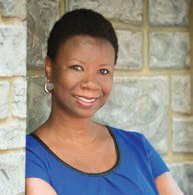From the Editor: Connect the Dots on Well-being
By Kaylen Tucker Principal, January/February 2018. Volume 97, Number 3.
By Kaylen Tucker
Principal, January/February 2018. Volume 97, Number 3.
 You have a school improvement plan, but do you have a plan for comprehensive learning that will contribute to each student’s overall well-being? In her book, Six Steps to Boost Student Learning: A Leader’s Guide, district administrator and author Karen A. Goeller outlines a strategic approach to comprehensive learning, beginning with school leaders focusing on what matters most for students. Among those elements, she argues, should be ensuring equity and varied opportunities to learn.
You have a school improvement plan, but do you have a plan for comprehensive learning that will contribute to each student’s overall well-being? In her book, Six Steps to Boost Student Learning: A Leader’s Guide, district administrator and author Karen A. Goeller outlines a strategic approach to comprehensive learning, beginning with school leaders focusing on what matters most for students. Among those elements, she argues, should be ensuring equity and varied opportunities to learn.
“Students do not just need more of the same, but more of the right components that are aligned closely with good teaching and learning,” she writes. “What are those right choice pieces, both easy-to-access and aligned to good teaching and learning, that will skyrocket students toward higher goals?”
This issue of Principal magazine drills down on some of the necessary elements for comprehensive learning that Goeller explores in her book. Here’s what some of your colleagues have to say about the principal’s role in delivering a comprehensive and well-rounded education:
“We need to look at the structure of how we ‘do school’—meaning how we schedule, what we offer, and how we assess. We also have to bring civics and responsibility to the forefront. How do we want our children to behave? What do they know about democracy? —Victoria L. Day, New York
“With the accountability placed upon schools to produce student outcomes as measured through standardized assessments, principals have to consciously and consistently provide teachers with the permission, opportunity, and knowledge to expand curriculum and instruction to provide relevant, well-rounded, and experiential learning for their students.” —Rachael George, Oregon
“Principals have to give teachers the green light to be their best selves, take risks, and not be afraid to do something different to help their students have a great day in school. That confidence is contagious to the students.” —Andy Jacks, Virginia
I hope that you will not only take Jacks’ advice and give teachers the “green light” to connect the dots on comprehensive learning and well-
being, but also share this magazine resource with them to build a
stronger instructional team.
—Kaylen Tucker, Ph.D.
@kaylentucker

